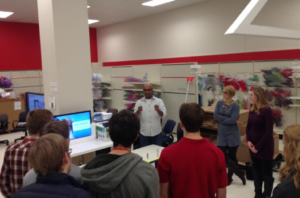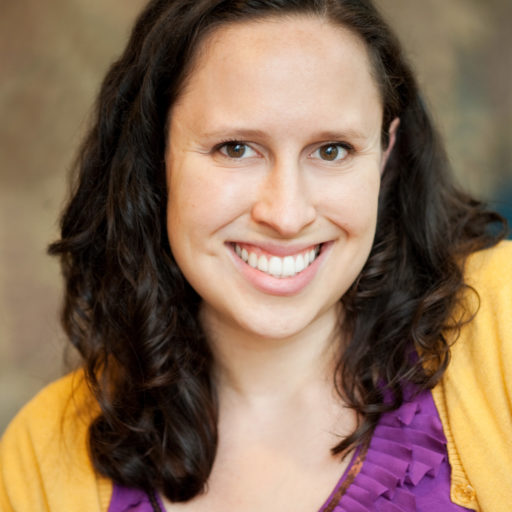“Does anyone have any questions?”
In many classrooms, when a teacher asks this question, they are met with silence.
Even when I was a student, “Does anyone have any questions?” made me a bit anxious. Questions did flood my head, but it sounded more like this:
Should I have questions? Is this question a trick question? If I ask a question, does that mean I wasn’t paying attention? What if I ask the wrong question? Does my teacher have a question they are waiting for? Is my question stupid to the person sitting next to me?
By the time I had gone through the full decision matrix of asking a question, the moment had passed.
In my computer science classes, I frequently bring visitors into the classroom to provide students with opportunities to see what careers with computer science look like in the “real world.” However, when a visitor asks the room, “Are there any questions?” the silence is even more palpable.
Learning to ask questions is a skill. Learning to ask the right question is an advanced skill, which is why I have found Question Formulation Technique (QFT) to be a helpful tool I can use in my classroom to build these skills in students.
Learning to ask the right question is an advanced skill.
I first learned about QFT when I attended a mathematics teaching conference at Phillips Exeter Academy in the summer of 2015 and then was re-introduced to it at a Knowles Teaching Fellows meeting in the fall of 2015. QFT is a process that facilitates the asking of many questions. The process includes providing a question focus, producing questions, categorizing questions, prioritizing questions, and reflecting on the experience and next steps. I was intrigued: having such clear steps helps provide students with structure as they generate their own questions, and allocating class time to developing questions helps teach students the skills needed to develop questions in the real world. I have struggled to find a way to incorporate QFT into my teaching routines, especially when the learning targets for a specific day in my geometry classroom are so specific. There doesn’t always feel like there is room for open exploration of ideas in my geometry class, particularly given that all the teachers in geometry have agreed to pace our instruction at the same rate.
However, in my computer science classroom, my main goal is to increase student interest in computer science. When an opportunity came along to have students visit Target headquarters in Minneapolis to work with the engineers and scientists in their technology departments, I needed a way to get students ready to engage with these engineers. Enter QFT.
I have found that students tend to buy in more to new strategies if I am fully transparent about my intentions and goals. I designated one hour to use QFT with my students. When we started the hour, I explained a bit of the backstory of QFT to my students—I wanted students to see that this was not another activity I had made up, but there was research behind it. It felt important for me to explain my thinking to students.

Target engineer Jake Krings speaks to other engineers and the author’s students. Photo by Kaitie O’Bryan.
My question focus for students was a short paragraph of text from emails I had exchanged with my partner at Target as well as snippets from his team members’ LinkedIn profiles. Students were given five minutes to read the paragraph of text and then two minutes to summarize what they read or pull out key pieces of information in that text. From there students worked in small groups for 12 minutes to generate questions about what they read. Twelve FULL minutes. That tends to be a lot of time to a high schooler and certainly more time than a student typically gets when we ask, “Does anyone have any questions?”
In these groups, one person documented the questions in a Google document while their team continued to ask questions. While some of these questions got off task in unproductive ways, other questions showed how students were making connections to the work Target was doing and their own learning or lives. As I observed students participating in this protocol, my main role was ensuring every question was written down in the document. Students are accustomed to judging their responses immediately, but there was no judgement during this time—EVERYTHING was put into the document. While monitoring the class, I intervened a few times to remind students of that rule if I noticed some of the questions were not being included.
At the end of the 12 minutes, we discussed the difference between closed and open-ended questions, and students color-coded their questions based on these two distinctions. We then practiced modifying closed questions to make them into open-ended questions. Finally, students prioritized their questions to determine their top three questions for Target’s team so I could send them to my partner at Target. Doing this helped students prepare for the trip—and helped the Target team understand what my students were already thinking before their arrival.
QFT helped students prepare for the trip—and helped the partnering corporate team understand what my students were already thinking.
At the field trip, students met five individuals who worked in different roles related to technology in Target stores. Target employees shared their unpredictable journeys that led them to working in technology with Target, and then the students broke up into two groups and saw new technologies Target was using (or hoping to use) in their stores to improve the guest experience. The experience was fast, but—because we had gone through the QFT process before the trip—students were ready to hear what the engineers were sharing and students were ready to ask questions throughout the experience.
After this experience using QFT before a field trip, I have actively sought out ways to incorporate QFT into my class more frequently. One way in which I have done this is when preparing students for guest speakers in my computer science classes. Guest speakers can be a very valuable part of a course, and this is especially true in my computer science class where I am trying to get students to see the many different options a career in technology has to offer. While I do my best to prepare guest speakers, I also prepare my students using a QFT protocol.
While I still get met with initial silence when I ask, “Does anyone have any questions?” in class, QFT has helped my students get the most out of experiences with visitors to the classroom or on field trips. In particular, I have noticed using QFT gives all students courage to ask questions during trips or with visitors. When I have skipped the QFT process due to time, there are only two or three students who ask questions of visitors. But that is not the case when I utilize the QFT process; during those experiences, I see more students ask questions—it appears that engaging with QFT has provided more students with the confidence to ask questions.
QFT is one tool in my “teacher toolbox,” but I am still looking to better develop a classroom culture that values question asking. Ideally, QFT would not be just a lesson each quarter of the year, but rather a mindset that students are able to internalize—a mindset where they are constantly producing, categorizing, and prioritizing questions that propel their learning forward.
Learn more about Question Formulation Technique at rightquestion.org/education.
Kaitie O’Bryan is a Knowles Senior Fellow and a math and computer science teacher in Minneapolis, Minnesota. She teaches AP Computer Science Principles and works with other AP Computer Science Principles teachers and outside organizations to increase student interest in computer science. Reach Kaitie at kaitie.obryan@knowlesteachers.org.




